How to assemble an Indesit washing machine?
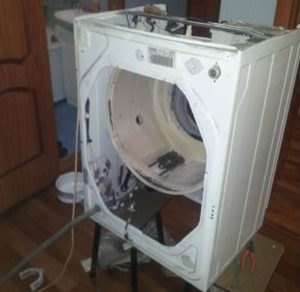 Sometimes, when repairing a machine, you have to completely disassemble the washing machine. Take, for example, the work of replacing bearings and oil seals - this is a very labor-intensive and time-consuming process that requires the removal of almost all components of the machine. A master will cope with such a task in a few hours, while a user who decides to repair the unit himself will need the whole day. After carrying out repairs, it is important to assemble the Indesit washing machine efficiently and correctly. To avoid mistakes, you should carefully study the instructions for assembling the device.
Sometimes, when repairing a machine, you have to completely disassemble the washing machine. Take, for example, the work of replacing bearings and oil seals - this is a very labor-intensive and time-consuming process that requires the removal of almost all components of the machine. A master will cope with such a task in a few hours, while a user who decides to repair the unit himself will need the whole day. After carrying out repairs, it is important to assemble the Indesit washing machine efficiently and correctly. To avoid mistakes, you should carefully study the instructions for assembling the device.
Assembling the tank
So, the first priority task that arises after replacing the bearing on the drum is reassembling the tank. In most Indesit washing machines, the tank is non-separable, so during repairs it is carefully sawn into pieces. Securely connecting the two halves, ensuring their tightness is a task that arises at this stage of work. You can assemble the tank in two ways: using waterproof silicone sealant and self-tapping screws, or soldering the halves using a welding rod and a hot air gun.
The first method, when experts advise placing the tank on sealant, is considered simpler. Even before sawing the cast tank of the machine, it is necessary to drill holes on it, which will be needed for subsequent fastening of the halves with self-tapping screws. Therefore, after replacing the bearings, the following will remain:
- degrease the seam on both halves of the tank;
- Apply silicone moisture-resistant sealant around the circumference of the connecting seam. It is very important to treat every millimeter without missing even a small area;
For gluing the tank, only a sealant that can withstand temperature changes, high pressure, vibrations, and does not allow water to pass through is suitable.
- place the parts of the tank one on top of the other, aligning the holes pre-drilled in the halves;
- screw screws or self-tapping screws of a suitable diameter into the prepared holes along the entire perimeter of the connecting seam;
- wait for the sealant to dry completely.
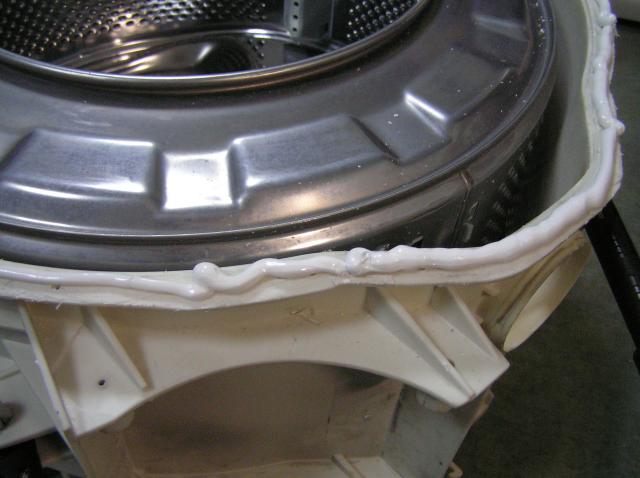
This method of assembling the tank has some disadvantages. Firstly, it is unknown how the sealant will behave over time with constant use of the SMA. Secondly, it is unclear how reliable such a connection will be and how long the washing machine will last. Today, some craftsmen seal the sawn tanks of washing machines. To carry out the work you will need:
- construction hair dryer;
- welded rods. Welding wire is easy to find in any specialty store;
- a nozzle for a hot air gun, narrowing its opening;
- welding nozzle for filler material.
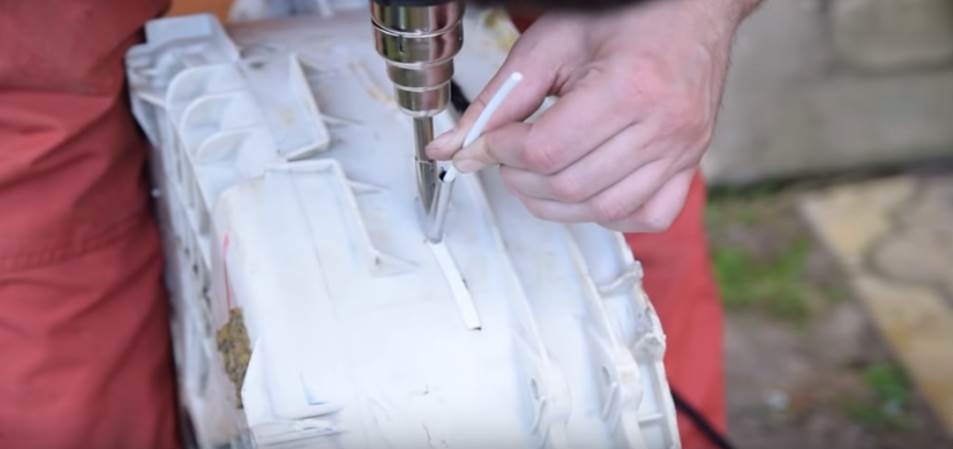
Before you start connecting, you should check how compatible the selected rods are with the tank of your automatic washing machine. This can only be determined experimentally. To do this, try to apply the material to the surface of one of the tank halves to understand how it adheres to the element.
Professionals recommend purchasing HDPE plastic welding rods for Indesit machines.
After the connecting material has been selected, it is necessary to “grab” the tank halves in several places to fix them in one position. Next, the element is soldered along the entire seam. It should be understood that by choosing this method of connection, at the output you will again receive a cast, non-separable tank, which will have to be sawed off when the bearings break down again.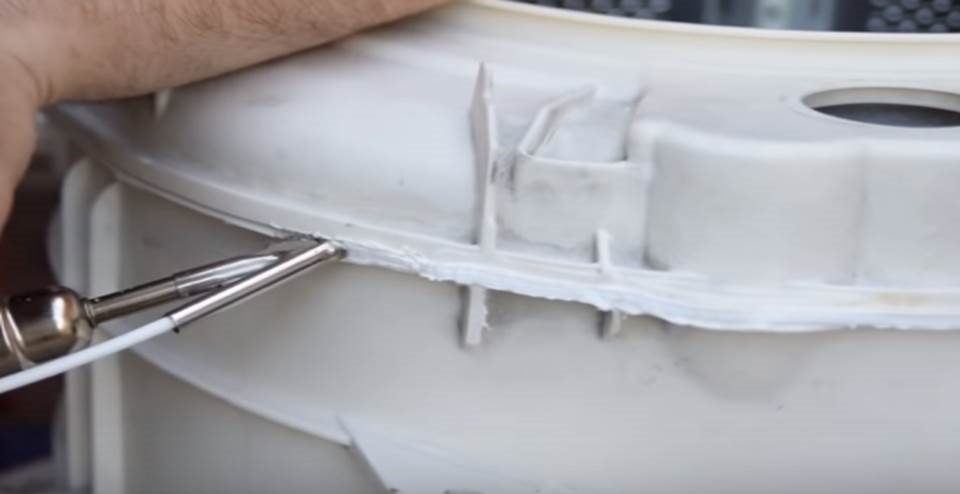
Using a heat gun, the halves of the tank can be connected in just 15 minutes. Even a layman can carry out the assembly in this way. The choice of how exactly to fasten the sawn parts remains only with the owner of the SMA.
Installing the tank into the housing, connecting the pipes
Further assembly of the machine with your own hands involves installing the tank back into the body, connecting to it the drain pipe, pump, and powder receiver pipes. All actions are performed in strictly reverse order:
- The tank is inserted into the washing machine. When installing the tank, you should remember about the shock absorption system. Be sure to hang the element on springs and connect it to dampers;
- lay the washing machine on its left side to put the stands in place and secure the drain pipe;
- secure the racks with the previously unscrewed screws and the drain pipe with two clamps;
- connect the wires from the pump and the water intake valve clamps to the tank;
- Replace the pressure switch, connect its power supply;
- Reconnect the powder receiver pipes.

Be sure to check the reliability of the connections of the pipes and hoses. Do not forget to secure the elements with clamps where necessary. Afterwards, you can begin installing other main components of the Indesit washing machine.
Installation of other parts
There is very little left to finally assemble the Indesit washing machine. Next, it is important to correctly connect the electric motor, heating element, and control panel removed during disassembly, fix the counterweight, put on the belt, and straighten the sealing collar. The algorithm of actions will be as follows:
- put the engine in place, secure it with bolts, then connect the removed wires with chips;
- insert the heating element into the groove.Connect the wiring to the contacts of the tubular heater and temperature sensor. Tighten the central nut, thereby securely fixing the part inside;
- install an upper counterweight - a heavy block designed to ensure the stability of the washing machine. It is secured with three screws. Be careful when working with the counterweight, the stone is very heavy;
- return the control panel to its place, connect the wiring supplying it. First, the panel is fixed with latches, then with bolts.
The panel fastenings are located around the perimeter and near the powder receptacle niche.
- put the drive belt on the engine pulley, and, carefully rotating, pull the rubber band onto the drum wheel. If difficulties arise, involve an assistant, since the belt on the Indesit is quite tight, and it can be difficult to put it on alone;
- go to the cuff - straighten it out of the drum and straighten it. Replace the metal clamp. Snap the ring fastening;
- screw back the garbage filter, close the lower false panel covering the element;
- insert the detergent dispenser.

This way, all elements of the washing machine will be installed in place. Check that you have not forgotten anything: inspect the connection points of all pipes, tubes, and power wires. Next, you need to install the wall of the service hatch, secure it with self-tapping screws, secure the top cover of the washing machine body, connect the drain and inlet hoses. Then the washing machine moves to the wall or is placed back in the unit.
Upon completion of assembly, the automatic machine is connected to the sewerage system and water supply. It is necessary to test the equipment - run the wash with an empty drum. During operation, do not move far from the unit so that if there is a leak, you can immediately notice it and turn off the equipment. If everything is done correctly, the washing machine will delight you with quiet, calm operation. The bearings will no longer make noise, which means you can continue to use the washing machine.
Interesting:
1 reader comment

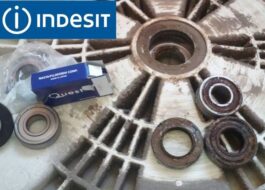
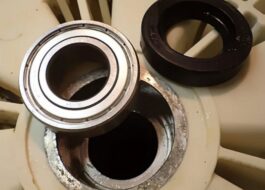
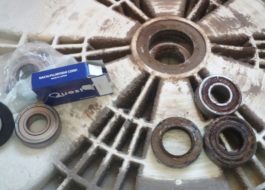

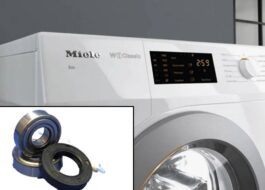
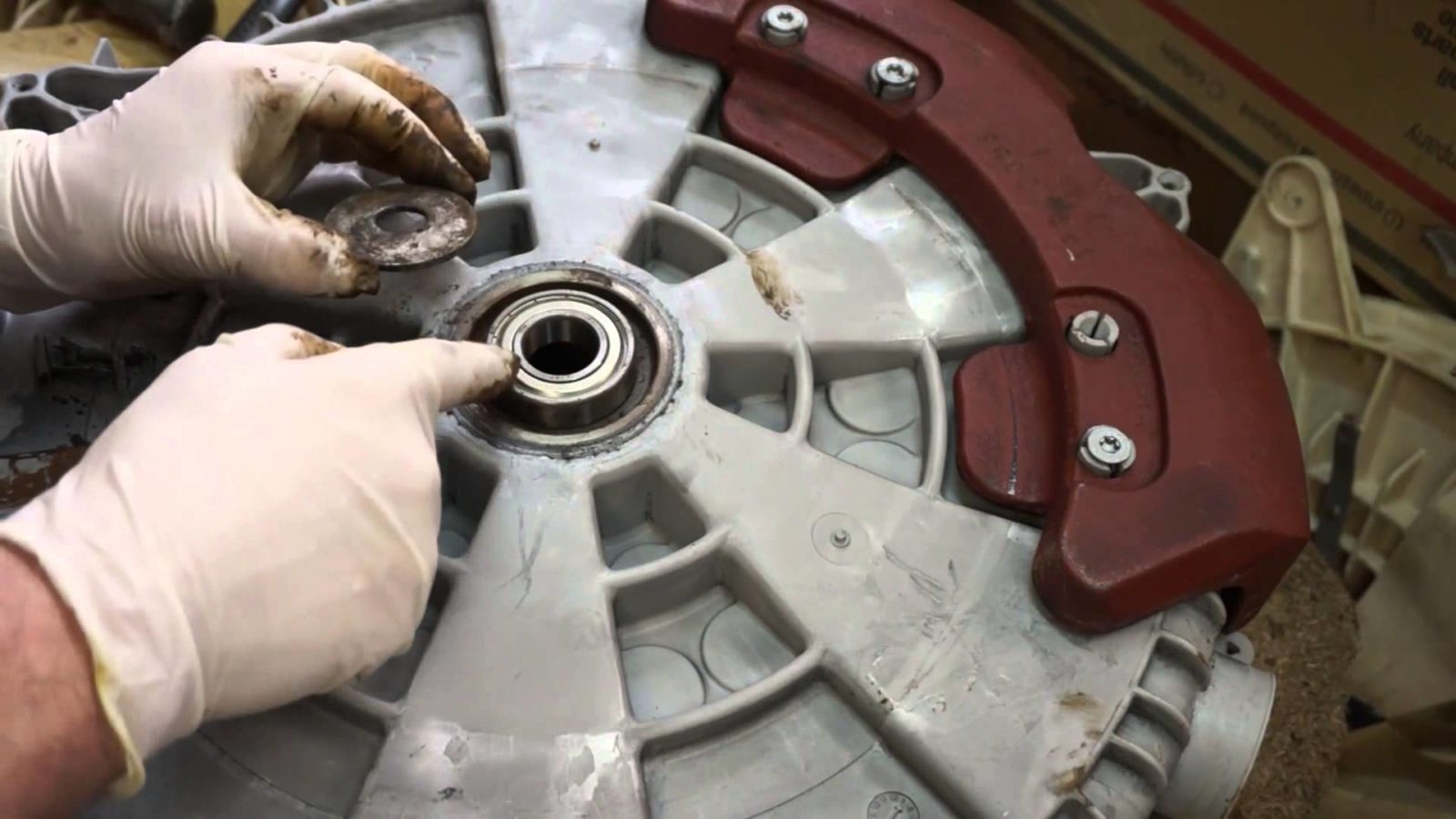














How to install the motor and belt correctly?